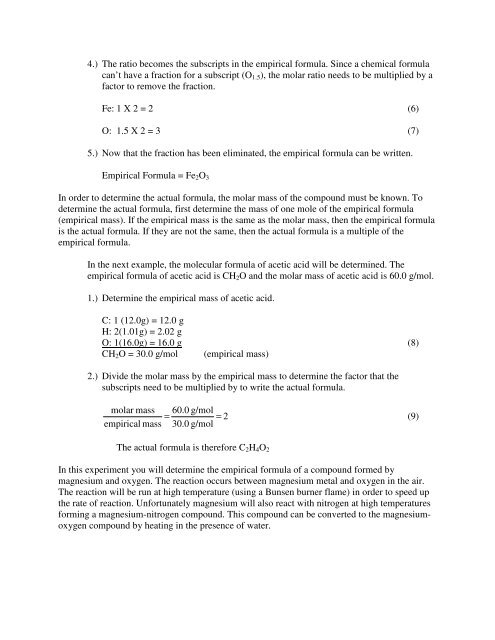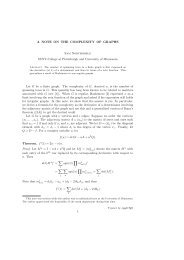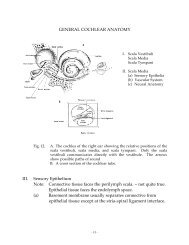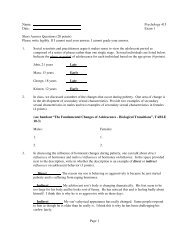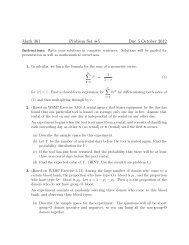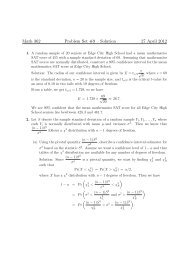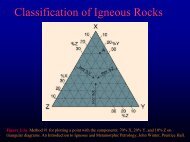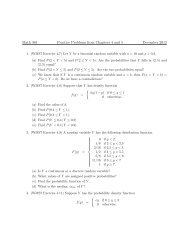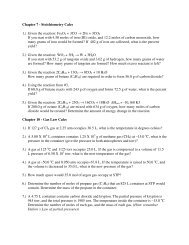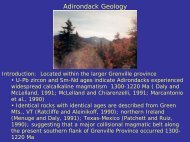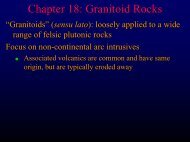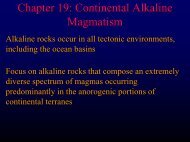Empirical Formula - Faculty web pages - SUNY Plattsburgh
Empirical Formula - Faculty web pages - SUNY Plattsburgh
Empirical Formula - Faculty web pages - SUNY Plattsburgh
- No tags were found...
Create successful ePaper yourself
Turn your PDF publications into a flip-book with our unique Google optimized e-Paper software.
4.) The ratio becomes the subscripts in the empirical formula. Since a chemical formulacan’t have a fraction for a subscript (O 1.5 ), the molar ratio needs to be multiplied by afactor to remove the fraction.Fe: 1 X 2 = 2 (6)O: 1.5 X 2 = 3 (7)5.) Now that the fraction has been eliminated, the empirical formula can be written.<strong>Empirical</strong> <strong>Formula</strong> = Fe 2 O 3In order to determine the actual formula, the molar mass of the compound must be known. Todetermine the actual formula, first determine the mass of one mole of the empirical formula(empirical mass). If the empirical mass is the same as the molar mass, then the empirical formulais the actual formula. If they are not the same, then the actual formula is a multiple of theempirical formula.In the next example, the molecular formula of acetic acid will be determined. Theempirical formula of acetic acid is CH 2 O and the molar mass of acetic acid is 60.0 g/mol.1.) Determine the empirical mass of acetic acid.C: 1 (12.0g) = 12.0 gH: 2(1.01g) = 2.02 gO: 1(16.0g) = 16.0 g (8)CH 2 O = 30.0 g/mol (empirical mass)2.) Divide the molar mass by the empirical mass to determine the factor that thesubscripts need to be multiplied by to write the actual formula.molar massempirical mass60.0 g/mol= = 2(9)30.0 g/molThe actual formula is therefore C 2 H 4 O 2In this experiment you will determine the empirical formula of a compound formed bymagnesium and oxygen. The reaction occurs between magnesium metal and oxygen in the air.The reaction will be run at high temperature (using a Bunsen burner flame) in order to speed upthe rate of reaction. Unfortunately magnesium will also react with nitrogen at high temperaturesforming a magnesium-nitrogen compound. This compound can be converted to the magnesiumoxygencompound by heating in the presence of water.


